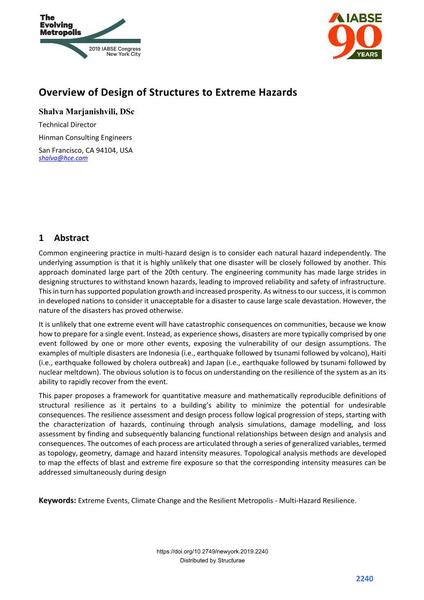|
Abstrakt:
|
Common engineering practice in multi-hazard design is to consider each natural hazard independently. The underlying assumption is that it is highly unlikely that one disaster will be closely followed by another. This approach dominated large part of the 20th century. The engineering community has made large strides in designing structures to withstand known hazards, leading to improved reliability and safety of infrastructure. This in turn has supported population growth and increased prosperity. As witness to our success, it is common in developed nations to consider it unacceptable for a disaster to cause large scale devastation. However, the nature of the disasters has proved otherwise. It is unlikely that one extreme event will have catastrophic consequences on communities, because we know how to prepare for a single event. Instead, as experience shows, disasters are more typically comprised by one event followed by one or more other events, exposing the vulnerability of our design assumptions. The examples of multiple disasters are Indonesia (i.e., earthquake followed by tsunami followed by volcano), Haiti (i.e., earthquake followed by cholera outbreak) and Japan (i.e., earthquake followed by tsunami followed by nuclear meltdown). The obvious solution is to focus on understanding on the resilience of the system as an its ability to rapidly recover from the event. This paper proposes a framework for quantitative measure and mathematically reproducible definitions of structural resilience as it pertains to a building’s ability to minimize the potential for undesirable consequences. The resilience assessment and design process follow logical progression of steps, starting with the characterization of hazards, continuing through analysis simulations, damage modelling, and loss assessment by finding and subsequently balancing functional relationships between design and analysis and consequences. The outcomes of each process are articulated through a series of generalized variables, termed as topology, geometry, damage and hazard intensity measures. Topological analysis methods are developed to map the effects of blast and extreme fire exposure so that the corresponding intensity measures can be addressed simultaneously during design
|

